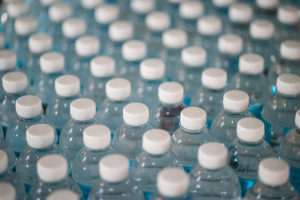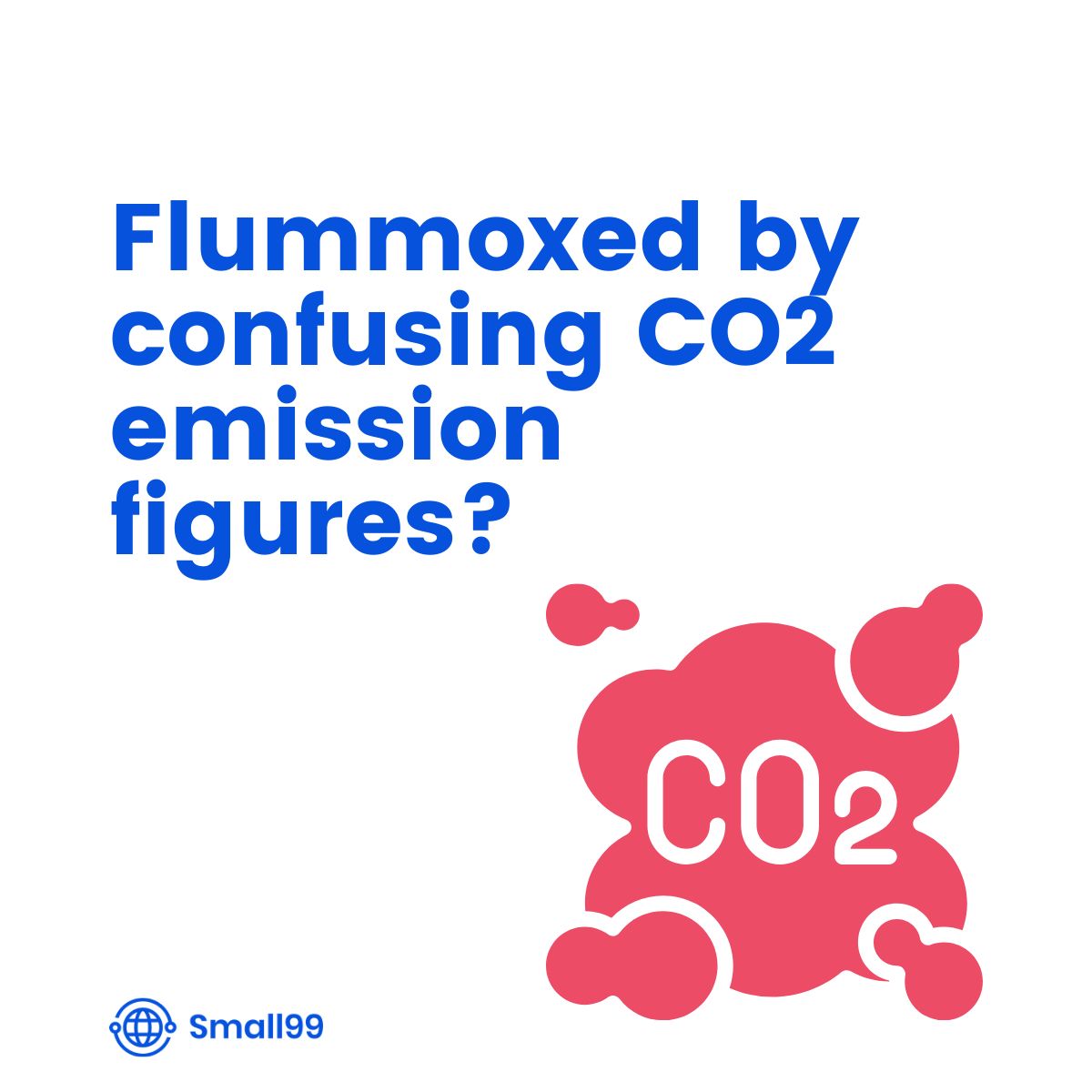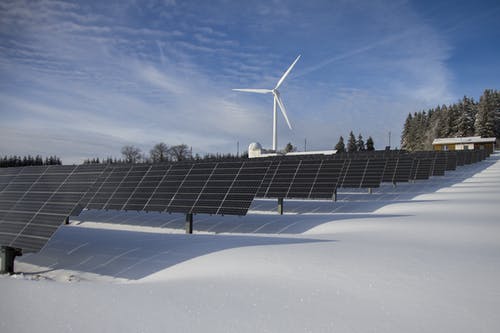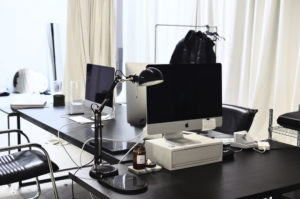











The aim of Small99 is simple: Provide practical, actionable advice that any small business can take to reduce their carbon footprint and move towards net zero.
This page is essentially the shopping list of where to begin, and covers the major impacts you can make quickly.
When thinking about the impact your business has on the environment, it’s important to not just focus on the big things. It’s vital to also change your thinking to include every decision you make on a daily basis.
You don’t need to be perfect. We’re on a journey to net zero and achieving this won’t happen overnight.
Be kind to yourself too. Perfect is the enemy of progress. We don’t need to be 100% accurate in where your business generates emissions. Making changes that are positive but we can’t easily measure is still far better than doing nothing at all.
It’s about making a start, and being more thoughtful about the decisions you make in your business.
We want to make you excited, and be the spark that starts you on your net-zero path, whatever it looks like.
So what are you waiting for?
Get stuck in below, and start changing the world, one change at a time.


There are 3 pillars that your emissions will broadly fall into. We’ve organised this guide accordingly to make it easier to tackle.
How do you power your business and keep staff warm?
The most complex to tackle: where do your goods come from, and where do they go after your customers have used them?
How do you move yourself and your goods around?
Potential Impact: Medium
Where do I start? Start measuring your CO2 emissions using one of the free tools mentioned
Before we can start making an impact, we need to understand what your footprint is, and where your carbon emissions are coming from.
This will look different for every company. A taxi company is going to have vastly different requirements to an online retailer running a warehouse.
You can have a rough estimate of your environmental impact using free carbon emissions calculators such as those provided by the Carbon Trust and National Energy Foundation. We suggest you start here as this can give a really quick, easy to understand view of where emissions are in your business.
For a complete evaluation, you may also want to hire a consultant to perform a more detailed assessment
Carbon Trust – Carbon Calculator for small and medium sized businesses.
Compare your Footprint – Affordable monthly plans for monitoring your footprint
Carbon Footprint Calculator – One-off payment with support
There are three core “pillars” to most business impact::
Travel and Buildings are quite easy to measure and are included in the above calculators.
However, the final element of your footprint will be your supply chain – where you buy stuff from. This is far more complex to calculate and will look different in every business.
We look at this in more detail later.


Potential Impact: High
Where do I start? Change supplier. If you’re renting, contact your landlord to discuss options.
Every business needs energy, which makes switching energy supplier something everyone can do.
Many suppliers offer 100% renewable tariffs which you may be able to switch to. Depending you choose, you could be:
As for gas, except for Green Energy UK, which supplies 100% clean fuel, all the other green tariffs include either a minimal fraction of green gas (10-15%) and/or carbon offset schemes.
The UK produced ~40% of its electricity from renewable sources in 2020, up from around 7% in 2010, with this increasing each year.
We’ve all walked into offices and public buildings where the radiators are on full blast, with the windows wide open in Autumn.
Controlling air conditioning units and regulating building heating can have a huge impact.
As of 2010, DECC estimated air conditioning cooling to be responsible for ca. 10% of the overall UK electricity consumption.
With global warming causing more intense and frequent heatwaves in Britain, the AC’s energy burden is expected to increase.
For this reason, a sensible programming (i.e. setting reasonable temperatures, timing and seasonal variations) of your AC unit could save a lot of energy.
Potential Impact: High
Where do I start? Get a smart meter for your business
Again, measuring is key.
If you want to reduce your energy consumption, an easy place to start is to keep track of it and identify waste.
Based on its roll-out plan, the UK government aims at installing smart meters in over 30 million premises between households and small businesses.
This could lead to a 45 million tonnes CO2 emissions reduction, the equivalent of 137.25 billion miles driven.
A nation-wide installation of smart meters will minimise energy waste and maximise clean power supply. A smart grid is much more responsive to demand, and means renewable energy can be maximised when it is most available.
Smart meters will help you appreciate how much energy you use and how/where that power it is used. Based on this information, you’ll be able to implement changes to reduce your energy consumption, such as replacing an incandescent bulb with a LED light, switching to a more suitable tariff based on when and how you use energy, etc.
For example, let’s look at how much energy a single 100W light bulb uses.
It’s left on every night in the evenings because occasionally the cleaner visits in the evenings after-hours.
The lights are kept on between 6pm and 11pm (5 hours a day, 5 days a week).
| Incandescent | LED | |
|---|---|---|
| Daily Usage | 5 Hours | 5 Hours |
| Monthly Usage | 100 Hours | 100 Hours |
| Yearly Usage | 1200 Hours | 1200 Hours |
| KW Per Hour | 0.1 Kw | 0.01 Kw |
| KG CO2 per Year | 28 | 2.8 |
| Miles Driven Equivalent | 85 | 9 |
That’s just one lightbulb!
There will be many areas in your business where there are small “leaks” of energy, which can add up to the equivalent of hundreds of miles driven over a year.
Smart meters let you identify these leaks.
Potential Impact: High
Where do I start? Apply for grants, if eligible
You don’t need to make all of these changes on your own. Eco-conscious businesses can get financial help to become more energy-efficient.
Check out these grants available across the UK. If you meet the eligibility criteria, you could receive up to £20,000.
Outside the list above, see more resources below.
Business Growth Hub Energy Efficiency Grant
There are many simple ways to reduce your carbon footprint in your office.
Thermal insulation is one of them.
If your ceiling is not insulated, you’ll lose up to 40% of the internal heat. That means investing in roof insulation will lower your heating system usage in winter.
If your building has got solid walls, insulating them can save up to 2,100 Kg of CO2 per year, the equivalent of driving 6,405 (!) miles.
You may also be eligible for energy saving grants to make your premises more efficient.
Potential Impact: Medium
What do I do? Buy second-hand LED lights or new bulbs
Despite using at least 75% less energy than incandescent lighting, ENERGY STAR rated LED light bulbs last 25 times longer.
Replacing inefficient light bulbs with LED lighting in your office will reduce your carbon emissions by up to 65 kg a year, which is equivalent to driving your car for around 198 miles.
Potential Impact: Low
Where do I start? Buy second hand IT equipment where possible. Measure usage with smart meters, and ensure any equipment is low-consumption.
It may sound trivial but printing on both sides and B&W whenever possible is already a good start.
If you own a laser printer and want to bring your commitment up a notch, upgrade to inkjet and you will save up to 85% in energy. Plus, you can recycle your cartridges.
When buying the next computer (or laptop ideally, if you want to save up to 80% in electricity), make sure to get one with an ENERGY STAR-label as it will use up to 65% less energy than uncertified machines.
Turn off your computer at the end of the day if you don’t want to fill a double-decker bus with CO2 at the end of the year.
Potential Impact: Low
Where do I start? Change your hosting to renewable hosts.
Similar to changing your energy provider, it’s important to be using web hosts who also use 100% renewable hosting. This is an easily overlooked area, but the size of your website can cause a large amount of data needed to be transferred, which can directly relate to emissions.
For example, a website generating 10,000 page views a month can produce 120kg of CO2 each year, equivalent to a 350 mile journey in a petrol car.
Luckily because its energy used, you can move to an environmentally friendly host who uses renewable energy:
You can measure your current website impact at Website Carbon.
Besides opting for more sustainable materials and recycling as many things as you can, reusing goods is another impactful strategy you can pursue to curb your emissions.
Embrace a circular mindset and give used items a new life. You can buy second-hand office furniture and equipment from Gumtree and eBay.
Believe it or not, in 2019 second-hand shoppers saved as many CO2 emissions as 50% of Norway’s annual carbon footprint.
The table below shows the carbon footprint associated with the production of some office furniture. These can be avoided by purchasing second-hand products.
For example, buying 2 new second hand desks could save you the equivalent CO2 to driving London to Edinburgh and back, twice.
| Eco Craft | World of Envelopes | |
|---|---|---|
| Environmental Policy? | Yes | No |
| Renewable Power? | Yes | Unknown |
| Materials? | Product page states whether it’s vegan, recycled, compostable etc | Offer some environmentally friendly materials but not all |
| Carbon Neutral Deliveries? | Yes – Interlink | Unknown |
| Comments | All items recyclable Have solar panels All materials are from EU or UK Clearly discusses the different grades of material they use | Little information. Some eco products. |
| Item (New) | KG of CO2 | Miles Driven Equivalent |
|---|---|---|
| Work Station | 45 | 136 |
| 6 Person Bench Desk | 271 | 825 |
| Bookcase | 21 | 64 |
| Wood Filing Cabinet | 57 | 174 |
| Office Chair | 143 | 436 |
Potential Impact: Medium
Where do I start? Start removing plastic from your business and use alternative materials
It’s important, when making any purchasing decision, to consider recycled or alternative materials that can reduce your footprint.
This will look different in every business, but by being thoughtful every time you make a business purchase, you can instil new processes in your business that have a big impact over time.
Ideas
Terracycle offers zero waste boxes specifically for office waste and you can also join their free recycling programs.
As for plastic reduction, there are plenty of plastic-free packaging alternatives readily available on the market to ship your parcels in a more eco-friendly fashion.
Also, don’t stick to sellotape and go for more sustainable sealing options.
Potential Impact: High
Where do I start? Talk to your staff about eco-friendly transport options and apply for grants mentioned.
A year after the COVID-19 pandemic outbreak, using software like zoom and google meet became second nature. Encourage your staff to TC long-distance clients instead of travelling.
For commuting to/from work, promote and reward greener schemes such as cycling or car sharing.
Over the UK average commuting distance, switching from a petrol car to a bike would reduce your employees emissions by 69%.
Discover the benefits of being a cycle-friendly employer, such as increased staff productivity, money saving and, of course, lower emissions!
Also, the UK government is incentivising the transition to EVs (which emits 72% less CO2 than petrol cars) allowing tax exemptions and a “Workplace Charging Scheme”.
Potential Impact: High
Where do I start? Change your delivery packaging, and switch to a carbon neutral logistics company. Look at local eCargo companies for small deliveries.
One of the vital areas of your business to assess is consumables.
Every day your company generates waste and uses resources, and changing your suppliers to be more environmentally friendly can help reduce your carbon footprint on a continual basis.
Equally swapping to a delivery company that uses EVs, eCargo Bikes or offsets carbon emissions can have a big impact on day to day emissions.
For low-carbon faster deliveries, keep an eye on funding available for eBikes and eCargo bikes. Plus, local eBike delivery companies like Zedify can help you achieve zero emission logistics.
Browse our best packaging alternative guide.
Now that you’ve made reductions in as many areas of your business as possible, it’s time to consider offsetting the rest of your emissions.
Referred to as “Scope 3” emissions, these typically fall outside of your control or influence and sit in your supply chain.
For example, you cannot control the electricity generation that is used to power trains on your commute. However, you can offset carbon generated by investing in schemes which reduce the carbon in the atmosphere.
As mentioned at the start, supply chain is the most complex element to start measuring. Where you buy your supplies from, and where they buy their suppliers from, will all impact on your footprint.
These are often impossible to measure without hiring dedicated experts to assess the whole impact, which is impractical for most small businesses.
Instead, being thoughtful about where you’re buying from and carrying out some basic due diligence on your suppliers will help you start the journey to net zero, even if you can’t measure it.
| Eco Craft | World of Envelopes | |
|---|---|---|
| Environmental Policy? | Yes | No |
| Renewable Power? | Yes | Unknown |
| Materials? | Product page states whether it’s vegan, recycled, compostable etc | Offer some environmentally friendly materials but not all |
| Carbon Neutral Deliveries? | Yes – Interlink | Unknown |
| Comments | All items recyclable Have solar panels All materials are from EU or UK Clearly discusses the different grades of material they use | Little information. Some eco products. |
Let’s take the humble envelope as an example.
Are these being made from recycled paper? Is the paper from sustainable forests? What glue is used in them? Does the glue contain animal fats? Is the company delivering the box to you offsetting their footprint? Are you offsetting yours? Do you use envelopes that have a non-recyclable plastic window in them?
This is why it is so important to be thoughtful and practical, rather than totally accurate. It’s unlikely you could have all of these questions answered by the company if you asked, and it’s too time consuming to try and get all of the answers anyway.
When you come to purchase something for your business, check the company has an environmental policy, often in the footer of their website.
Check environmental policies for:
In that order!
When tackling your carbon footprint, it’s tempting to look at your existing behaviours and see what small shifts you can make.
However, for meaningful impact and to avoid “greenwashing”, you need to have a root and branch approach to your operations.
Reducing what you consume or need is always going to be best. That includes everything from energy (switching to LEDs, turning off devices, switching to more efficient appliances) through to using less packaging when sending orders.
Reusing reduces the demand on creating new materials. The embodied energy (total energy emitted in the creation of an object) of a desk chair sits at around 70kg of CO2 – roughly the same as a 200 mile trip in a petrol car. A 6 person desk can be as much as 230kg of CO2. Where possible, we recommend buying second hand as this removes the demand of that CO2, and it’s already been emitted.
Recycling is important to do as much as possible, but not at the expense of reducing or reusing. Recycling itself still takes energy and will usually still mean there’s demand for a new product to be produced. This varies based on industry naturally, but many “ethical” clothing brands are still using huge amounts of energy making new ranges, while tonnes of clothes are destroyed each year.
Creating a product is always going to take more energy than reusing something. Using recycled paper will still be worse than reducing the amount of paper used for printing, or in packaging materials.
Creating 10,000 pieces of A4 paper takes around 200kWh of energy and produces 600kg of CO2.
10,000 sheets of recycled paper emits around 320kg of CO2.
So your carbon footprint can be reduced by the following amounts – the bigger the number, the better.
If we do nothing we are adding 600kg of CO2 per year.
If we use recycled paper, we are adding 320kg of CO2 per year.
If we reduce our paper usage entirely by 10,000 pieces a year, we are saving 600kg a year.
| 10,000 Pieces of A4 | CO2 per Year |
| Do Nothing | +600KG |
| Switch to Recycled Paper | +320KG |
| Reduce Usage Entirely | -600KG |


Using Circle of Influence frameworks, Net Zero can be split into three simple essential scopes: What can you Control, What can you Influence, What is a Concern..


We provide small businesses owners with some definitions and guides on what Net Zero means for them, and how to achieve it.


To slow down global warming and climate change, it is our role as well as a venture to take part in it. One of the most overarching approach of sustainability that we can do is reducing carbon footprint in the company activities.



With so many carbon offset schemes popping up, which one should you go for?


Small99 is a resource hub for small business owners to get practical guidance on how to achieve net zero.